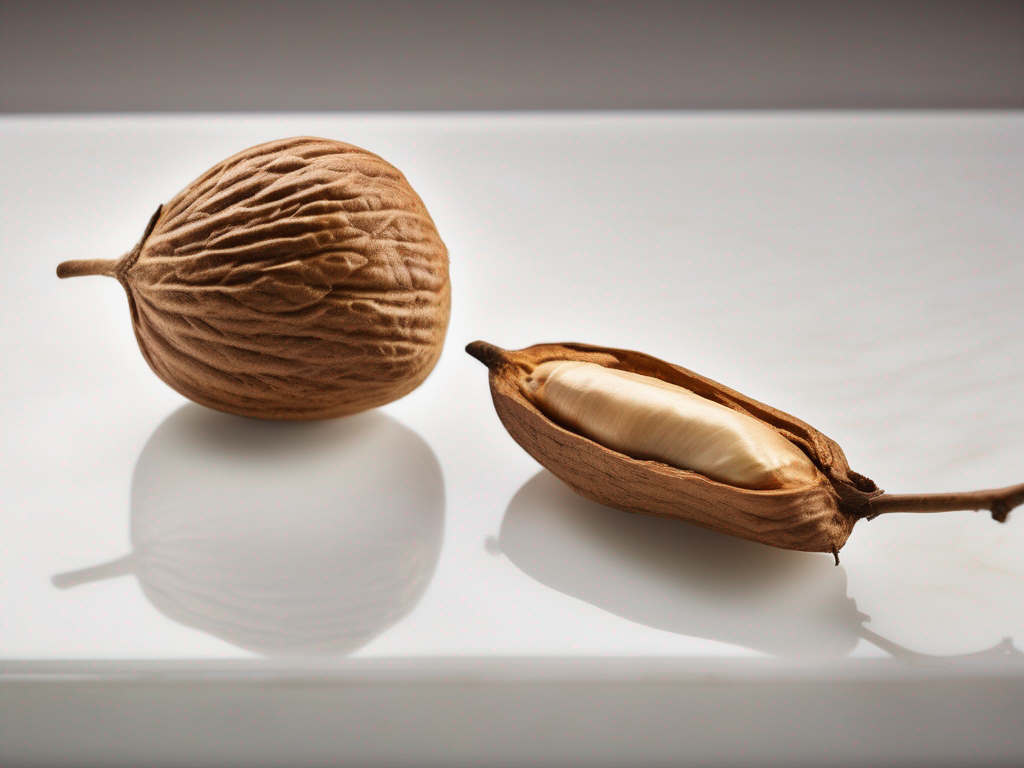
Determining if Breadnut Tree Seed has Gone Bad: Keep or Discard?
Get Your Free Food Safety Cheat Sheet
30 most common foods with instant answers. Print it and stick it on your fridge—completely free!
Determining if Breadnut Tree Seed has Gone Bad: Keep or Discard?
Breadnut tree seeds are a delicious and nutritious food item that can be enjoyed in various dishes. However, like any other food item, breadnut tree seeds can go bad if not stored properly. In this blog post, we will discuss how to determine if breadnut tree seeds have gone bad and need to be thrown out. (Breadnut tree seed)
Understanding Breadnut Tree Seeds
Before we dive into how to determine if breadnut tree seeds have gone bad, let's first understand what they are. Breadnut tree seeds, also known as "ramon nuts," come from the breadnut tree, which is native to Mexico and Central America. These seeds are rich in nutrients, including protein, fiber, and essential vitamins and minerals.
Breadnut tree seeds have a slightly sweet and nutty flavor, making them a versatile ingredient in various dishes such as soups, stews, and salads. They can be roasted, boiled, or ground into flour to make bread or baked goods.
Signs of Spoiled Breadnut Tree Seeds
When it comes to determining if breadnut tree seeds have gone bad, there are a few key signs to look out for. Here are some indicators that your breadnut tree seeds may be spoiled and need to be discarded:
1. Mold or Fungus Growth
- Check the surface of the breadnut tree seeds for any signs of mold or fungus growth. Moldy or fuzzy patches indicate spoilage and should not be consumed.
2. Off or Rancid Smell
- Spoiled breadnut tree seeds may emit a strong, off-putting odor that is rancid or musty. If the seeds smell unpleasant, it is best to discard them.
3. Change in Color or Texture
- Fresh breadnut tree seeds should have a consistent color and firm texture. If you notice any discoloration, sliminess, or mushiness, it is a sign that the seeds have gone bad.
4. Bitter or Sour Taste
- Taste a small portion of the breadnut tree seeds. If they taste bitter, sour, or off, it is a clear indication that they have spoiled and should not be eaten.
5. Expiration Date
- Check the expiration date on the packaging of the breadnut tree seeds. If they have exceeded the expiration date, it is safest to discard them to avoid any potential foodborne illnesses.
Proper Storage Tips for Breadnut Tree Seeds
To prolong the shelf life of breadnut tree seeds and prevent spoilage, it is essential to store them properly. Here are some tips for storing breadnut tree seeds:
-
Store in a Cool, Dry Place: Keep breadnut tree seeds in an airtight container in a cool, dry place away from heat, moisture, and sunlight.
-
Avoid Exposure to Air: Seal the container tightly to prevent air from reaching the seeds, which can cause them to spoil faster.
-
Refrigeration: If you live in a warm climate or if you have a large quantity of breadnut tree seeds, consider storing them in the refrigerator to extend their freshness.
-
Freezing: Breadnut tree seeds can also be frozen to prolong their shelf life. Place them in a freezer-safe bag or container and store them in the freezer for up to six months.
By following these storage tips, you can help preserve the quality and freshness of your breadnut tree seeds for a longer period.
Conclusion
In conclusion, it is essential to pay attention to the signs of spoilage when determining if breadnut tree seeds have gone bad. Mold growth, off smells, changes in color or texture, bitter taste, and expiration dates are all indicators that the seeds should be discarded. By storing breadnut tree seeds properly and being mindful of their condition, you can enjoy this nutritious ingredient in your favorite recipes while ensuring food safety and quality.
For more information on breadnut tree seeds and other food items, visit [breadnut tree seed](/food/breadnut tree seed) for a wide selection of articles and resources. Remember to always prioritize food safety and quality in your culinary endeavors! (Breadnut tree seed)
Related Posts
Here are some other articles you might find helpful:
Authoritative Food Safety References
These agencies and university labs inform every tip and health precaution we publish.
USDA FoodKeeper – Cold Storage Guidelines
Official refrigerator, freezer, and pantry timelines maintained by the U.S. Department of Agriculture.
Visit USDA FoodKeeperFDA Produce Safety Rule & Grower Guidance
Field-to-fridge handling practices that prevent contamination of fruits, vegetables, and leafy greens.
Visit FDA Produce SafetyCDC Foodborne Illness Prevention Hub
Surveillance-backed guidance on pathogens, symptoms, and steps to reduce foodborne illness risk.
Visit CDC Food SafetyUC Davis Postharvest Technology Center
University research detailing optimal storage atmospheres for produce after harvest.
Visit UC Davis PostharvestPenn State Extension – Home Food Preservation & Safety
Peer-reviewed extension bulletins on safe canning, chilling, and reheating practices.
Visit Penn State ExtensionGet Your Free Food Safety Cheat Sheet
30 most common foods with instant answers. Print it and stick it on your fridge—completely free! Want more? Upgrade to the complete guide with 70+ foods.
Scan your food directly and get instant safety info using our AI-powered camera feature.